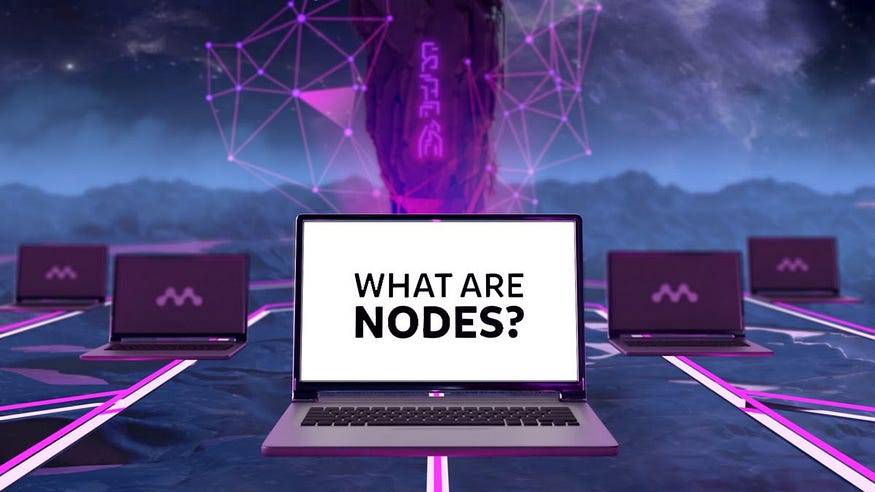Myria Node review
Myria Node review

This is the 2nd part of a Myria Ecosystem review, read Part1 here: Myria review
First, we will explain what a standard node is then we will discuss how blockchain and especially Myria Nodes work.
Node explained
A node definition according to Wikipedia: A physical network node is an electronic device that is attached to a network, and is capable of creating, receiving, or transmitting information over a communication channel. A passive distribution point such as a distribution frame or patch panel is consequently not a node.
Understanding this definition a Node is a computer that ensures information flow. To do so, it needs to:
- be a computer: for example, cables are not a node, although they ensure information flow.
- connected to the network: the node is supporting a specific network and therefore needs to be connected to it.
- ensure information flow: A node can not stand alone somewhere in the corner.
Understanding these conditions will make it easier to grasp how they work.
Myria building on top of Ethereum, the biggest and the most populated smart blockchain in the world. Ethereum has its own nodes (e.g. miners), which validate transactions.
Myria is building an Ecosystem and as a true blockchain native team, Myria is aiming to achieve decentralization. This will be achieved with data decentralization and this is one of the tasks that nodes do.
Subscribe to be notified about the Myria Node sale.
What does a Myria Node do?
Node is a blockchain network element that ensures stability, reliability, and accessibility of the network and does the following jobs:
- Decentralize: Myria nodes will be operated from different parts of the world. At the same time, there will be 55,000 node operators. Both of these parameters will result in a truly decentralized network
- Data storage: Nodes will store data and backups so that the data is never lost and always accessible to anyone in the world
- Data feeds: Every player will be able to access the data at all times
- Governance: Vote on Myria strategy and important questions related
- and more
Eventually, Myria nodes will become Layer 2 operators for Myria, our Ethereum Layer 2 scaling solution.
Running Node on a Computer or VPS
The node runs on a computer. You can either use a physical computer or notebook that you have at home or use a VPS — a Virtual Private Server. VPS is essentially a computer you get access to and operate as a normal computer, but you cannot lay your hands on.
To operate a Myria Node, your computer needs to meet certain expectations: 4 GB RAM, 2 CPU Cores, 60 GB Disk Space, An x86/X64 Processor, and a Stable Internet Connection.
Using a Computer
Advantages:
- cheaper: you already own the hardware
- it is physical: you can see your computer and physically check it
Disadvantages:
- non-adjustable: your computer may not meet all requirements. If they change, you would need to buy additional parts and change your computer setup, maybe even the whole computer.
- reliability: if the power, internet, or any other part goes down, you need to physically fix the problem and what is worse, you stop earning.
Using a VPS
Advantages:
- reliable: VPS is very reliable with 99% and more uptime. It is even possible to buy a 100% uptime guarantee
- adjustable: if the technical requirements change, you can easily go into setup and change your VPS parameters
- worry-free: if anything goes wrong, the VPS company is responsible for solving the problem
Disadvantages:
- monthly fee: every month you need to pay for the VPS, however, it is just $10-$25
- it is just virtual: you can not lay hands on your VPS
As a result, we highly recommend using a VPS, since reliability is our main goal. In the end, we are earning money, so paying a small monthly fee to ensure we maximize the earnings should be OK.
To learn more about Myria, head to www.myrianode.com or subscribe to be notified about the Myria Node sale.
Comments
Post a Comment